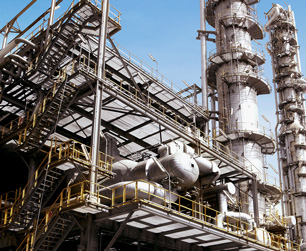Dichloroethenes (DCEs)
| EPA Maximum Contaminant Level (MCL) |
1,1-DCE | 0.007 mg/L |
| cis-1,2-DCE | 0.07 mg/L | |
| trans-1,2-DCE | 0.1 mg/L |

Dichloroethenes (1,1-Dichloroethene, 1,2-Dichloroethene; also known as dichloroethylenes) are organic chemicals used to make adhesives, synthetic fibers, refrigerants, food packaging, coating resins, chlorinated solvents, pharmaceuticals, artificial pearls. They're also used in the extraction of rubber, the removal of fats from meat and fish, and the decaffeination of coffee.
Dichloroethenes arrive in drinking water primarily through discharge from chemical factories.Health Effects of Dichloroethenes
With acute exposure, dichloroethenes can cause depression of the nervous system and may be toxic to the liver and kidneys. With long term exposure to high concentrations, the EPA warns of potential liver damage:
1,1-Dichloroethene, cis-1,2-Dichloroethene, trans-1,2-Dichloroethene :
Some people who drink water containing [dichloroethylene] well in excess of the maximum contaminant level [0.007 milligrams per Liter] for many years could experience problems with their liver.
Water Treatment for Dichloroethenes
The EPA recommends granular activated carbon in combination with packed tower aeration (an air stripping method). Reverse osmosis reduces dichloroethenes by about 85%. Lenntech reports that activated carbon on its own has a “high probability” of removing dichloroethenes.
Sources: EPA (1), EPA (2), EPA (3), WHO, Lenntech, Photo: WikiMedia, author: Secl
Site Index
Filtration Systems
- Aeration for Iron & Sulfide
- Backwashing Filters
(whole house & well units)
- Chlorine & Chemical Injectors
- Countertop Water Filters
- Emergency Filters
- Garden Hose Filters
- Reverse Osmosis, Residential
- Reverse Osmosis, Commercial
- Shower Filters
- Specialty Filters
- Ultraviolet Systems
- Undersink Filters
- Water Softeners
- Whole House Filters
Cartridges
Parts
- Replacement Parts
- Faucets
- Filter Media
- Fittings
- Housings
- O-rings
- Pumps
- Pura UV
- R.O. Parts
- R.O. Tanks
- R.O. Booster Pump
- VIQUA UV